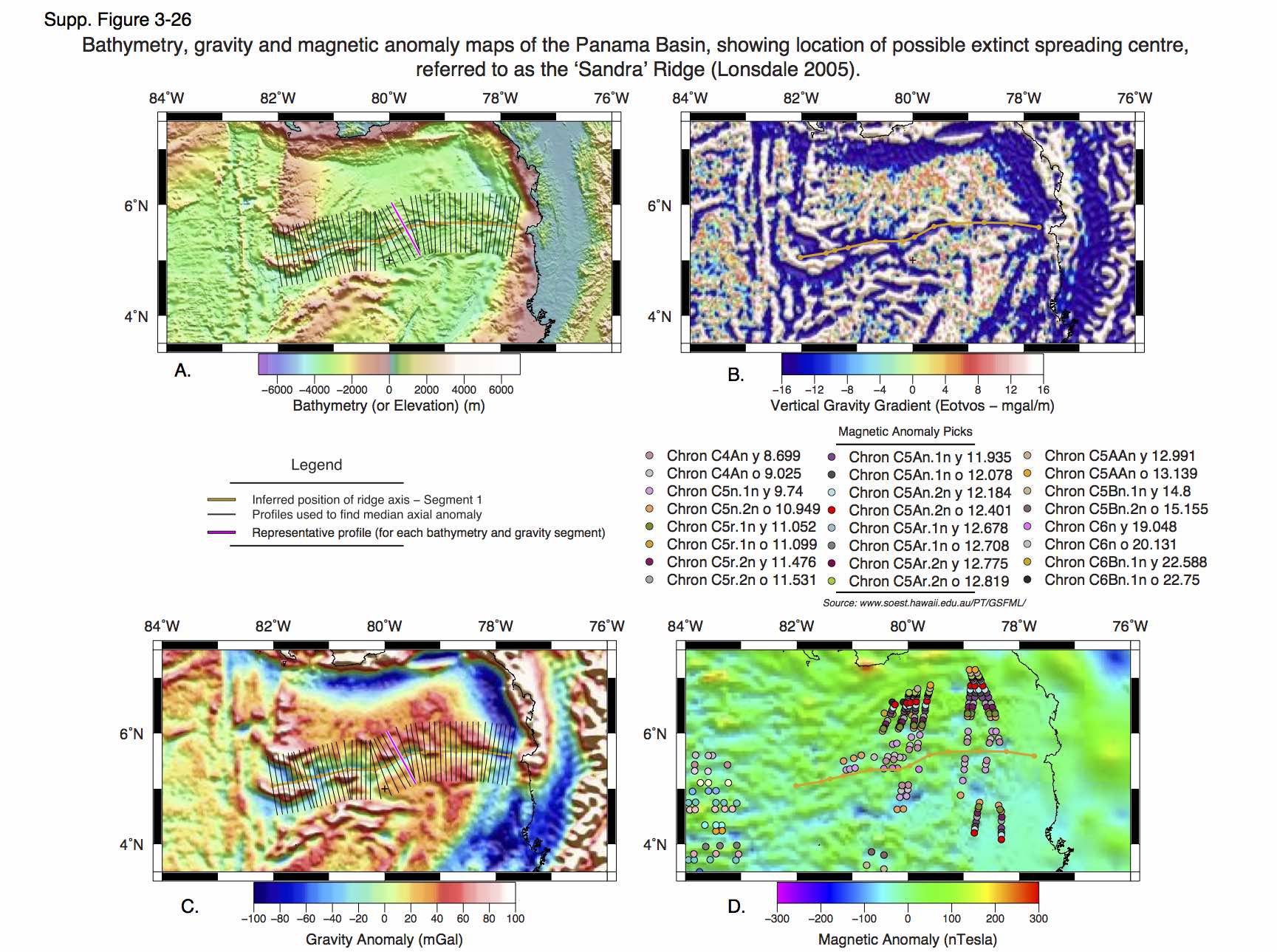| Ocean: | Pacific |
| Spreading center type: | Large-scale extinct MOR |
| Time of cessation: | Ca. 8 Ma, C4 (Lonsdale, 2005) |
| Subsequent active spreading centre: | Present-day Cocos-Nazca spreading centre |
Lonsdale (2005) proposed that the Sandra Ridge was an early spreading centre formed in the Micoene by fragmentation of the Farallon Plate, that led to the formation of the independent Cocos and Nazca plates. This ridge axis is identified by symmetric magnetic anomalies and a prominent bathymetric, rise-crest structure, that changes from a trough in the east to a volcanic ridge in the west (Lonsdale, 2005). It is suggested that the Sandra Ridge may have been active simultaneous to spreading on the Malpelo ridge to the south and that this could have led to an oceanic microplate between the two (Lonsdale, 2005).
The trough morphology and negative free-air gravity anomaly observed at the Sandra ridge is typical of an extinct spreading ridge and this ridge is considered as a "well-defined" extinct ridge.
Lonsdale, P., 2005. Creation of the Cocos and Nazca plates by fission of the Farallon plate. Tectonophysics, 404, p. 237-264.


